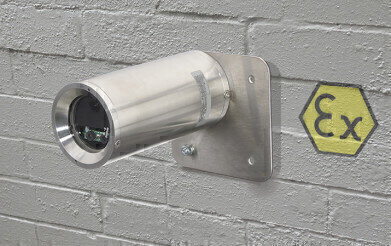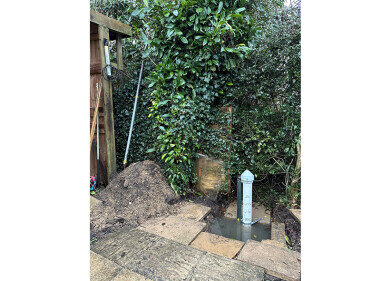Water/Wastewater
New EX remote camera for monitoring hazardous areas
Sep 15 2021
Meteor Communications has launched the MCE-MRC-EX camera, which is ATEX approved for use in Zone 1 & 2 hazardous areas. “Hundreds of our cameras are currently in operation all over the UK; helping to monitor and protect remote assets such as grilles, screens, channels, culverts and drains,” explains Meteor MD Matt Dibbs. “However, many of our customers in the water, waste, construction, rail and aviation sectors need to also monitor hazardous areas, so the MCE-MRC-EX camera was developed specifically to meet that requirement.”
Zone 1 & 2 hazardous areas are those in which there is a risk from the accumulation of an explosive gas. Typical locations therefore include confined spaces where there is a source of gases such as methane or petrochemicals, so the main applications for the MCE-MRC-EX camera will be in sewage and wastewater infrastructure, as well as in underground assets such as drains, culverts and pumping stations. Remote cameras can now be deployed in these locations to provide remote visibility of threats such as flooding.
The new camera is housed in an IP66 Ex-rated enclosure and an inbuilt IR or white light illuminator provides excellent low-light performance for clear, crisp images in any conditions. Images are transferred in real time via 4G with 3G/GPRS fallback, providing robust image transfer even from areas with poor mobile coverage. Images are sent to the ‘Meteor Cloud’ for secure viewing and analysis online, and there are options for those users wishing to integrate the images with their own applications.
The main advantage of remote cameras is that users are able to view sites remotely before deciding whether a visit is necessary, and also to determine what resources would be necessary for that visit. This means that less site visits are necessary, and wireless connectivity also means that operations such as camera configuration and firmware updates can be conducted remotely.
Importantly, all Meteor cameras allow direct connection of local sensors such as level switches and PIR sensors. Images can be delivered at scheduled intervals and be configured to trigger automatically from local sensors; providing additional images and alerts to users and entering enhanced polling modes.
Summarising, Matt Dibbs says: “The MCE-MRC-EX remote camera has a very low power requirement, whilst delivering high-quality, real-time images from remote assets within Zone 1 & 2 hazardous areas where data and mains power connections may not be available.”
Digital Edition
IET 34.2 March 2024
April 2024
Gas Detection - Biogas batch fermentation system for laboratory use with automatic gas analysis in real time Water/Wastewater - Upcycling sensors for sustainable nature management - Prist...
View all digital editions
Events
May 03 2024 Seoul, South Korea
May 05 2024 Seville, Spain
May 06 2024 Minneapolis, MN, USA
May 13 2024 Munich, Germany
May 15 2024 Lund, Sweden


















